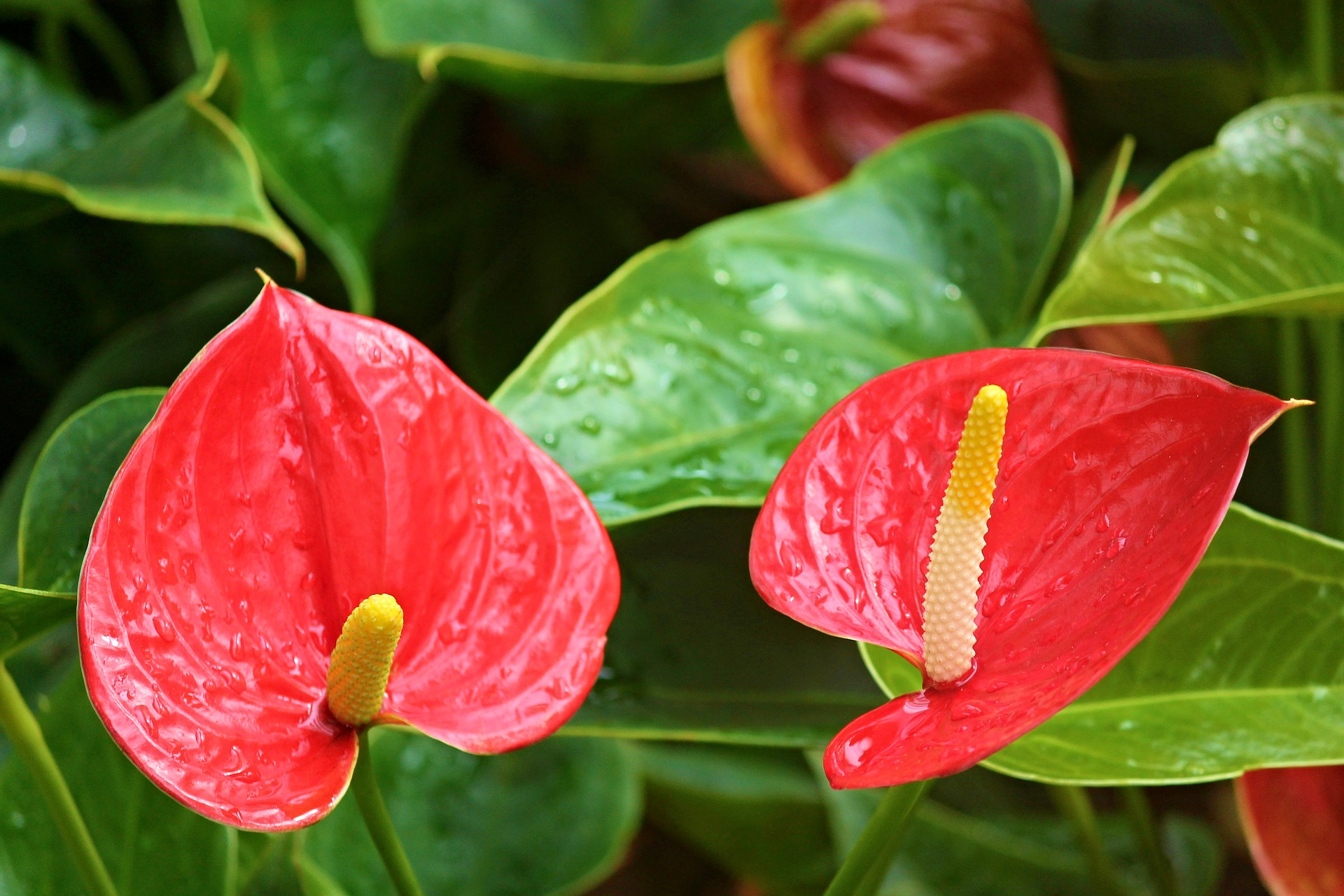Houseplants have the ability to wake up a room with their beauty and air cleaning qualities. To no surprise, studies reveal that indoor plants can help us heal faster and feel better by reducing anxiety, blood pressure and fatigue. They can also help us work better by improving productivity, concentration and memory. The simple act of caring for houseplants adds yet another layer to the benefits that they bring.


Houseplant Care Information
Location and Light
The type of houseplant will determine its placement. Most houseplants do best with bright, indirect light, but some need or can tolerate lower levels of light. Consult the plant tag or a knowledgeable person for specifics. Always avoid placing indoor plants in a draft of cold air or next to a wood stove/fireplace.
Temperature
Most houseplants thrive in daytime temperatures between 70-80˚F, with a night time temperature that is 5 to 10˚F cooler. Some tropical varieties will suffer at anything below 60˚F.
Water
The amount of water a plant requires depends on a number of factors, including plant size and type, time of year, potting medium, pot type and environmental conditions in the home.
Tips:
Larger plants need more water, but do not necessarily need to be watered more often. As plant growth speeds up in the warmer months, plants usually need to be watered a little more often than in the cooler months. Well-draining soil, like cactus mix, will dry out faster than a moisture retaining potting soil. Terra cotta pots wick moisture from the soil and often require more frequent watering. Forced air heating often dries out indoor plants quickly. As a general guide, water houseplants when the top 11/2” of soil is dry. Use your finger to determine this. This will work for most plants but there are many exceptions. For example, moisture-loving plants such as ferns do not want their soil to dry out, while drought tolerant plants, such as succulents and cacti, do not want to be watered more than once a month usually. Always use tepid water to avoid shock to the root system of the plant.
Fertilizer
Houseplants benefit from fertilizer applications during the late spring and summer months as warmer temperatures and increased light encourage increased growth. Try our Houseplant 8-3-1 Fertilizer Pellets for easy application. Down To Earth All Purpose Liquid Fertilizer 4-1-3 mixed with Maxicrop Liquid Seaweed makes for a well-balanced combo to feed houseplants. We also have liquid concentrates like Dyna Gro and Neilson’s Plant Elixer to feed your plants and help them in their growth period.
Pampering Your Houseplants
For the committed houseplant humans, there are a few extra things one can do to give their houseplants the best life possible. Spray the leaves in the morning a couple times a week. Use a damp sponge or rag to clean the leaves of dust and debris every few months. Rotate your plant every month. Play music for your plant. Even better, sing to your plant. Studies show that plants respond well to classical music over loud rock.
Repotting a houseplant
If the soil dries out in less than a week or if excessive roots are coming out of the bottom drain holes, this often indicates that its time to up-pot. The best time to up-pot is in the spring, but it can be done at any time. Most plants benefit from repotting into a larger pot upon purchase, however, it is not always necessary. When choosing a pot, look for one with adequate drainage, so excess water can drain off. This will prevent the roots from sitting in water and the soil from becoming oversaturated. When choosing a potting medium, consider the plant’s needs. Standard potting soil is appropriate for most plants, but there are special mixes (cactus, orchid, etc.) for plants with specific needs.
